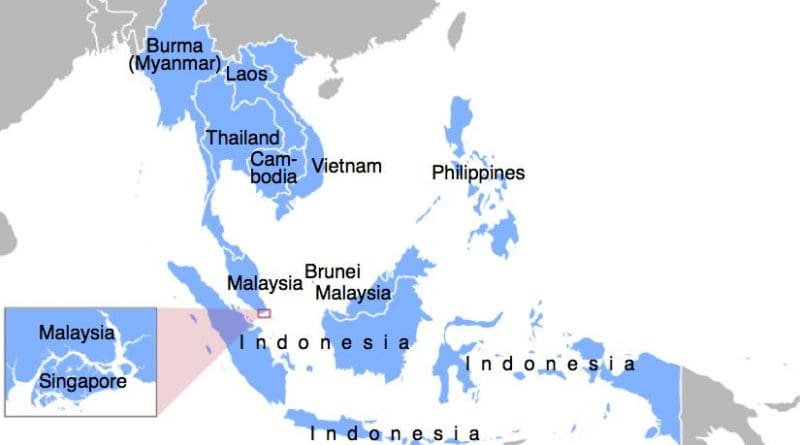US Should Bounce Back From Its ASEAN 2019 Letdown – OpEd
President Donald Trump’s absence from the recently concluded East Asia Summit in Bangkok represents another missed diplomatic opportunity to engage one of the world’s most vibrant and dynamic regions. At a time of increasing great-power competition, concern about apparent US retreat from multilateralism, doubts about its security commitments, and worries about its transactionalism, Trump’s presence could have sent a message itself.
With its half a billion people, some of the world’s fastest growing economies, its strategic location, and its ability to convene great powers, ASEAN deserves special attention in US foreign policy. Southeast Asia sits at the geographical center of the Indo-Pacific, touted as the single most consequential region for America’s future. It is thus central to the US’ vision for a free and open mega-region. It is probably from this vantage point that a low-level US delegation to the East Asia Summit upset regional leaders, leading to a partial boycott of the ASEAN-US sideline summit. Only three heads of state were present to meet Trump’s representative, National Security Adviser Robert O’Brien. These included host Thai Prime Minister Prayuth Chan-o-cha, ASEAN-US country coordinator Prime Minister Thongloun Sisoulith of Laos, and Prime Minister Nguyen Xuan Phuc of Vietnam, who will host the ASEAN and related meetings next year. In what can be seen as a snub, if not in keeping with diplomatic parlance, the rest sent their foreign ministers instead.
Last year, while President Trump was again a no-show, he at least dispatched Vice President Mike Pence to attend the East Asia Summit in Singapore. But this year, he sent his fourth National Security Adviser who was barely two months in office and whose closeness with the president remains uncertain. While some regional leaders may understand the demands of the electoral campaign and the ongoing impeachment debacle, not a few begrudgingly saw it as the Trump administration assigning less significance to the bloc and to a regional tradition that draws leaders from far and wide. Trump’s absence, in turn, provided an opportunity for leaders of other major powers to raise their profiles, not least China, who traditionally sends its number two, Premier Li Keqiang, as well as Japan, represented by Prime Minister Shinzo Abe, for the annual meet.
While China’s resurgence certainly challenges US leadership in the region, the latter’s actions are just as responsible, if not more, for the gradual erosion of its position. Unlike in the past, regional countries may no longer wait for America to make up its mind. The Comprehensive and Progressive Trans-Pacific Partnership (CPTPP), for instance, while remaining open for the US to rejoin in the future, went ahead as planned. The rebranded TPP includes four ASEAN states and four of its dialogue partners. Another example was the steady progress made in what could be the world’s largest free trade agreement, the Regional Comprehensive Economic Partnership. It came close to a conclusion in the recent Bangkok meeting and will likely be signed next year with or without India joining, although the 15 parties – ASEAN plus dialogue partners China, Japan, Republic of Korea, Australia, and New Zealand – agreed to adopt measures to address Delhi’s concerns. Although its standards may be lesser than that of CPTPP, it will be a big contribution to the ongoing efforts to upgrade the international trading system that stagnated since the 2001 Doha Round. US absence in these trade arrangements will diminish its influence in shaping the future architecture of global trade. Furthermore, US calls to ban Huawei are falling flat as Southeast Asian telecom carriers race to deploy 5G service and lack a clear alternative.
This said, hope springs eternal. While sending a downgraded delegation to the summit does not make for a good impression on the US’ part, America does seem to be taking steps to address the region’s priorities. Tapping into its domestic energy and technology strengths and leveraging partnerships with allies, the US can marshal resources to meet ASEAN’s burgeoning requirements. For one, thanks to technological drilling interventions, US has re-emerged as the world largest producer of oil and natural gas, a position it last held in 1973. This puts US in a position to meet the region’s growing energy demands, especially if appropriate infrastructure and logistics can be put in place. Secondly, the US’ Silicon Valley companies can play a role in the development of smart cities as more ASEAN countries rapidly urbanize. This is a field where Chinese tech companies Huawei and ZTE are making headway, although there are many other opportunities for other players to capitalize. Thirdly, the Blue Dot Network can probably entice the private sector to join in on rehabilitating or building regional infrastructure by evaluating and certifying proposed projects. Aid agencies or policy banks of the US, Japan, and Australia may even finance or provide guarantees for sound projects.
In sum, the US, by playing to its advantages, can still rollback its reversals, though it has to act swiftly and resolutely. President Barack Obama was able to upgrade US ties with ASEAN after inviting regional leaders for a special summit in Sunnylands in 2016, the same place where he invited President Xi Jinping in 2013. Hence, whether in Washington or Mar-a-Lago, the second ASEAN-US Summit next year upon Trump’s invitation is certainly worth watching out for.
This article appeared at China-US Focus

